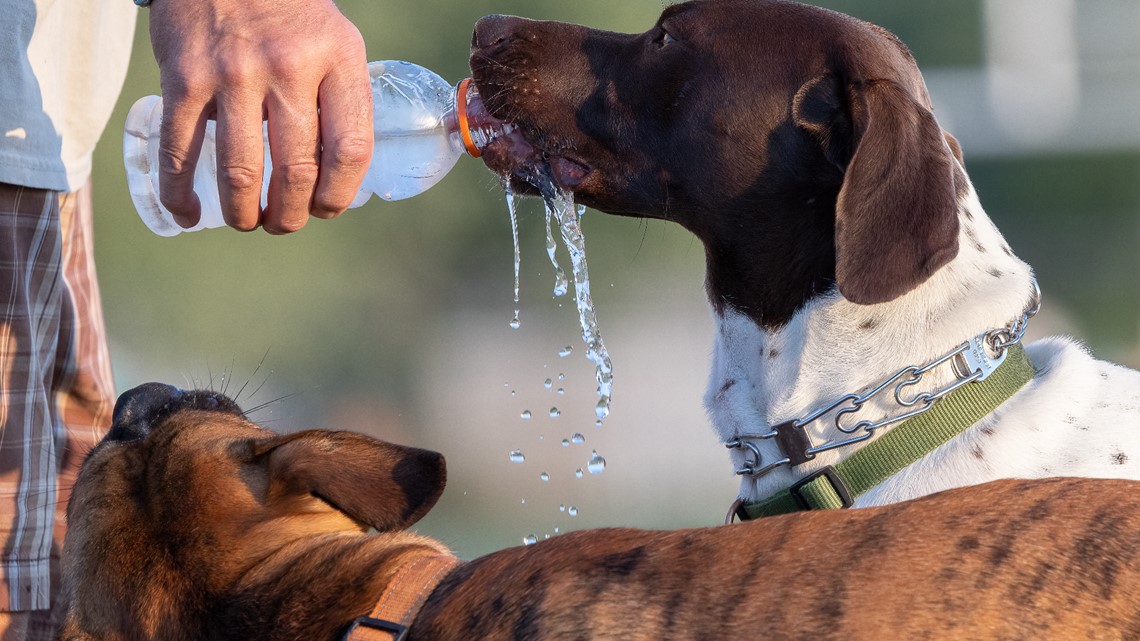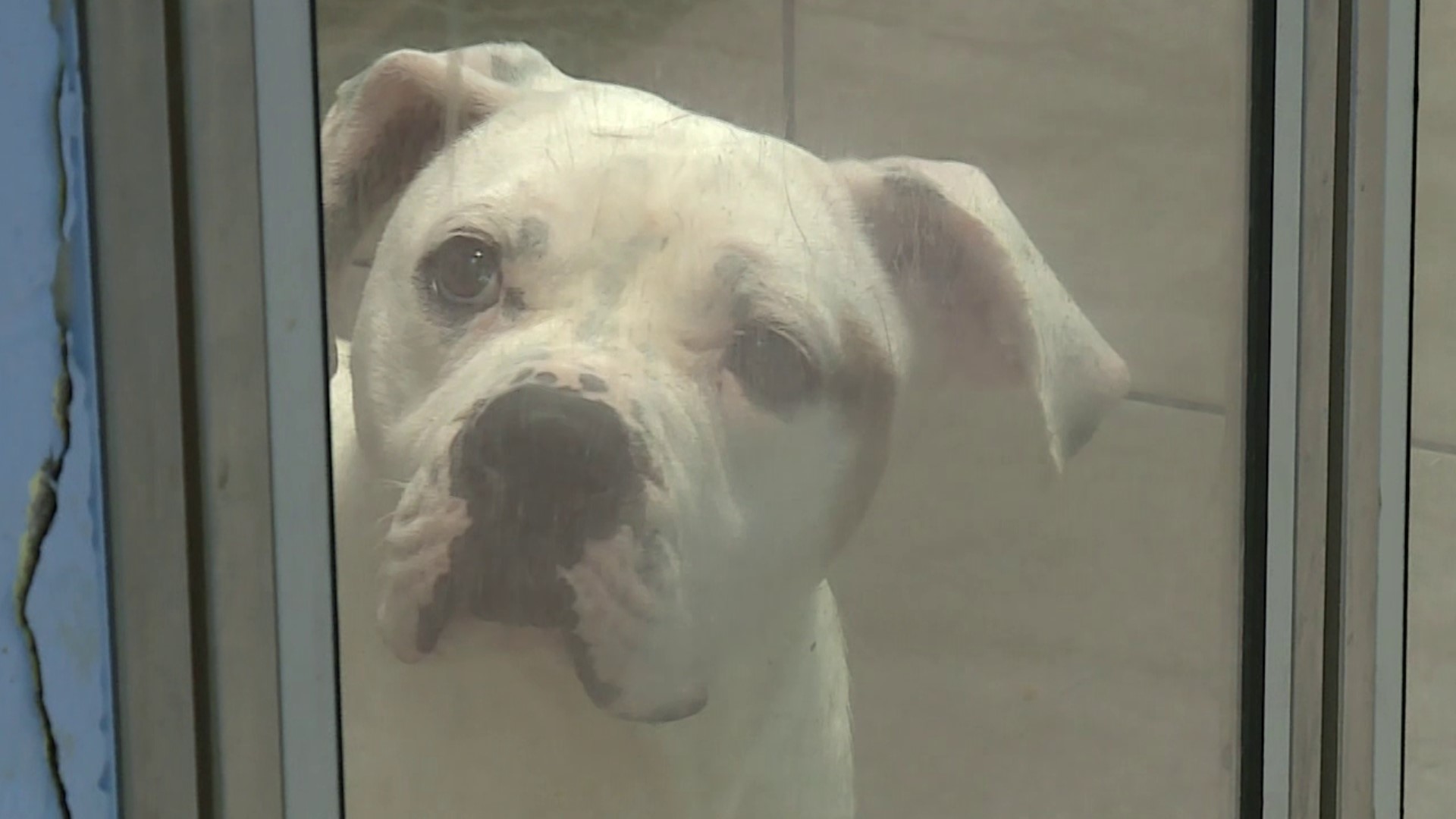ARKANSAS, USA — With record heat impacting millions across the country, Best Friends Animal Society (BFAS) offers tips to pet owners to help keep pets cool through the summer, but most importantly, how to protect them from a heat stroke.
Dr. Erin Katribe, the BFAS Medical Director, says animals can get a heat stroke if their "temperature rises to a critical level." According to Dr. Katribe, the normal body temperature of a cat or dog can be anywhere from 100 to 102.5 degrees.
At what temperature can a heat stroke occur?
For dogs, a stroke can occur when its body temperature raises to 108 degrees.
For cats, a stroke can take place if their body temperature raises to 106 degrees.
Heat strokes for these animals can cause "irreparable organ damage, or worse," according to BFAS.
How can I avoid that?
- Keep pets inside in the hotter parts of the day.
- Put your dog's exercise routine in the early morning hours to avoid peak heat hours in the afternoon.
- If you can't move the routines to mornings, make sure walks and bathroom breaks are quick, and try to go where there is shade.
- Be mindful of the temperature where pets will step on such as sidewalks, asphalt, sand, dirt, etc. At high heat temperatures, these can cause burns on your pet's paws.
- Make sure that outside dogs have plenty of shade and water. Dogs that are tied up can get tangled when trying to reach shade or water.
- Experts say no matter how thirsty a dog is, "most dogs won't drink hot water," so make sure they have fresh cold water at all times.
- BFAS says dogs with a pushed-in nose, overweight, have a thick coat, or are older, are more prone to overheating.
- If your dog has a thin coat or a bald spot, experts say they may need sunscreen and you should consult with your veterinarian.
- Last but not least, don't ever leave your pet inside a vehicle with temperatures over 70 degrees.
- Temperatures inside vehicles on a 70-degree day can quickly go up to 89 degrees in just 10 minutes and 104 degrees in 30 minutes, according to studies.
- Unlike humans, cats and dogs do not sweat. These animals pant in order to lower their body temperature. Panting will not help if they are breathing hot air from a hot car because it will not cool down their body, thus leading to a stroke very fast.
What are the signs of a heat stroke?
Here are the signs of a heat stroke according to Dr. Katribe:
- Heavy panting that does not stop when the pet rests
- Increasing distress
- A tongue color that is dark red to almost purple
- Weakness
- Hyper-salivation
- Heavy breathing
- Collapse
What should I do?
BFAS says If you think your pet is having a heat stroke, this is what you should do:
- Take the pet to a cooler area right away
- Apply cold water to their stomach, ears, and paws
- Take them to the vet immediately
After these types of episodes, Dr. Katribe says although it may not look like it from the outside, pets can still have things going on internally that can only be seen by a vet.


Watch 5NEWS on YouTube.
Download the 5NEWS app on your smartphone:
Stream 5NEWS 24/7 on the 5+ app: How to watch the 5+ app on your streaming device
To report a typo or grammatical error, please email KFSMDigitalTeam@tegna.com and detail which story you're referring to.

